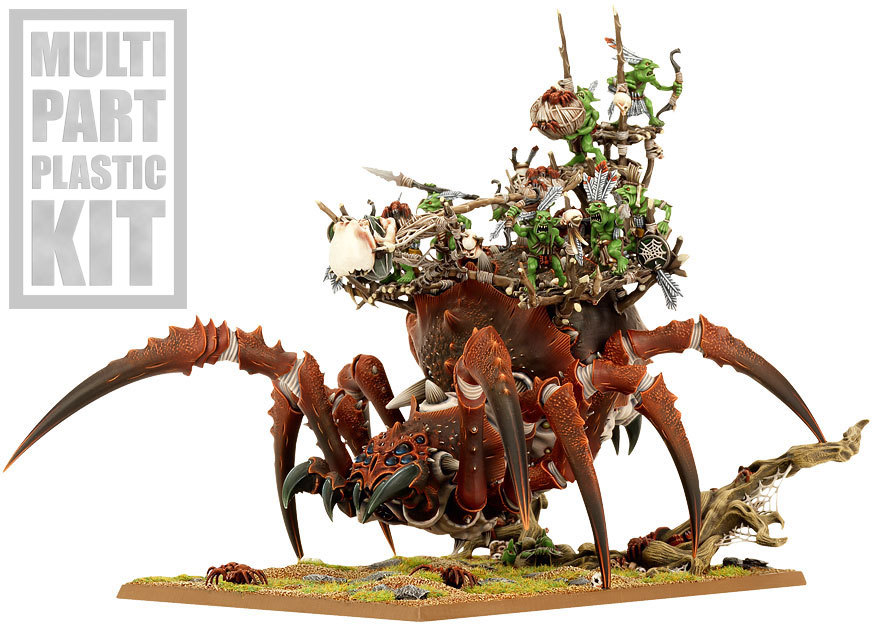From their website, what a gorgeous model.
I chose to buy this kit because I saw an excellent chance to use my airbrush on an entirely different scale of model then what I am used to. Now I just had to decide what colors to use. I liked the general look of the above model, but didn't like to interruption of the white sections of carapace (for the horns, fine). I wanted to take the scheme of that model and give it a more natural look, kind of like the reverse of this beauty:
I planned on using a red basecoat, followed by airbrushing the edges of the carapace sections with black. Then I would paint the horns before applying a dark brown ink wash to the entire model. After this would come the details. As an aside, if you guys decide to get this model do not expect to have this thing assembled in one day. It is a large, complicated, awkward model to put together.
So I followed a black primer with the red basecoat, using Vallejo Air Scarlet Red:
Admittedly, I may have thinned the paint down a little too much for the basecoat. Undaunted, I proceeded to apply the Vallejo Air Black to the lower halves of the legs, and the outer edges of the carapace:
Had to brush a little red on there to fix a couple errors.
Not too shabby! The blended effects on the legs are simple to obtain - just ease off the trigger as you "stroke" the (air)brush from bottom to top. Much like throwing a baseball, make sure to follow-through with the motion; don't just stop. The sections that have been painted on the carapace look a little choppy now, but will be blended with the ink wash.
Next came the horns:
I chose to use a bone-white color to provide a source of color contrast on this model, even though it will be darkened by the upcoming ink wash. Once the paint on the horns was dry I applied Didi's Magic Ink - Brown across the entire model. I let the ink dry overnight before proceeding.
Now the details. I painted the dimples with a light red color of my own mixture, which doesn't come out well in this picture but looks good in person:
Seeing this picture led me to touch-up the horns. Notice how the ink wash blended the carapace colors.
Next came the eyes and fangs. The eyes were basecoated with a dark blue color, then highlighted with a lighter blue. For your own models I would recommend reading this article about painting small reflective surfaces. The fangs were basecoated with Chaos Black, then highlighted with a dark grey.
Basecoat.
With highlights.
The model as of this stage:
With that, I will call an end to this article. There are much better painters out there who can show you how to paint the goblin infantry that serve as this beast's crew, but I hope I have showed you that good results can be obtained even from beginner airbrushers as long as you have a plan in mind. Keep practicing!
Oh, and I have a low-key twitter feed that you should check out @piflamesofwar, what'll be the harm by clicking "Follow"?














No comments:
Post a Comment